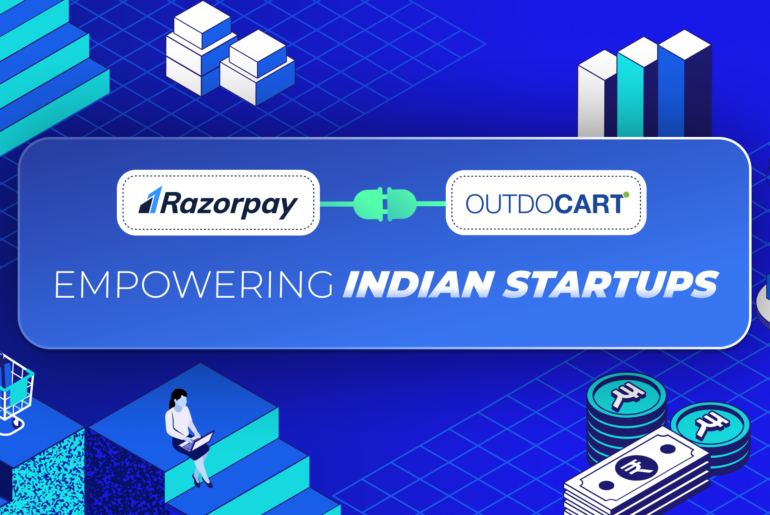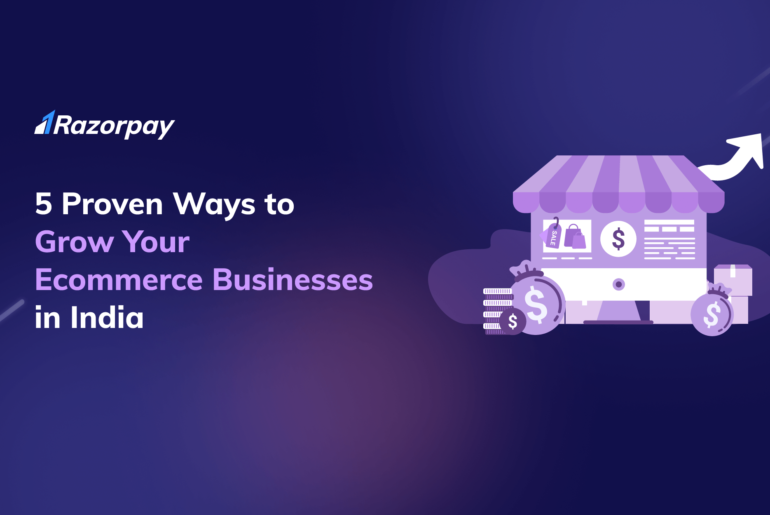Any salesperson will tell you that meeting customers at the right time is critical to sales conversions. Nothing makes selling easier than when you are talking with prospects who are ready to buy. Similarly, even in marketing, timing is crucial to fulfilling marketing objectives.
One of the core purpose of marketing is to engage and nurture leads over a period of time, until they are ready to make a purchase and handing them off to the sales team in high-touch situations or steering them to purchase using a “buy now” button on your website in low-touch scenarios.
Hence, reaching the target audience with the most relevant message, information or data at the most opportune moments sets the tone for creating the right customer context and ensures higher success rates. Drip email marketing is a highly effective strategy to achieve exactly this.
This is essentially a set of pre-designed and pre-defined messages that are personalized based on recipient interests and actions. The campaigns are designed keeping in mind the nature, type, and stage of customer journey and are triggered by time or action.
Drip marketing comes from the phrase ‘drip irrigation’, an agricultural technique in which small amounts of water are fed to plants over long periods of time, essentially providing timely nourishment in order to ensure optimum growth while ensuring minimum wastage. Similarly, with drip marketing, the idea is to provide value and care over time to accomplish various marketing objectives from nurturing leads to driving conversions to building customer relationships and loyalty.
Email marketing has been around for many years now and while it is still used by many organizations, it does not contextually connect with customers at all instances. A common result of such efforts are chocked inboxes and frequent unsubscribers. This is where Drip comes in and replaces quality over quantity as a strategic approach to email marketing. Drip campaigns enable advanced segmentation and allow companies to send highly targeted email communication.
This trigger-based communication technique create a near one-to-one experience between the user and the brand, with more emphasis on relevance and engagement in order to achieve a good email reputation. In a study by Email Monks, an email marketing platform, it was found that companies that excelled at drip email marketing generated 80% more sales at 33% lower costs.
In order to achieve success through drip marketing, marketers, like farmers have to pay attention to who they are nurturing and in what conditions and context. Customers come from varied backgrounds, with diverse needs and it’s important to realize that no two customers are alike. Hence, it makes little sense to send the same generic message and email to all customers and hope for the best. Here is a basic guideline to designing and executing drip email campaigns:
1. Identify customer target group
The first step while working on drip email campaigns is to identify the customer segment towards whom the campaign is targeted. To be successful with drip emails, it’s important to break your subscriber list into sub-categories, and channel information specific to the customer niche.
The most crucial aspect at this stage is to understand the basis for customer segmentation on your subscriber list. Typically, drips email campaigns are based on two types of triggers:
Behavioural Data – refers to the actions taken by users on your site or application; examples of this would be when a user downloads a case study or visits a particular product page.
Demographic Data – refers to the quantifiable characteristics of a user, like, age, gender, location, role, industry, and so on. This information can be collected via social media integrations, signup forms, surveys, etc.
User segmentation is key to drip emails, as it not only allows you to create highly customised content based on the distinct characteristics of the segment but it also allows you to trigger campaigns at most appropriate instances when the user’s intent to interact or buy is the highest.
So, the most important aspect here is to determine the triggers and groups to use for your drip campaign strategy. For example, a user receiving a case-study on how a particular product solved somebody else’s pain point after having visited that particular product page makes perfect sense.
Similarly, if you are an e-commerce store and the customer leaves the product at the checkout page, sending an email with a discount on that particular product helps in customer acquisition in the short term and retention in the long term.
In yet another example, let’s say a user is exploring possible ways to integrate a SaaS-based solution with his/her business, receiving an email with integration related docs results in instant gratification. Hence, reaching out to prospects at the most opportune instances increases the probability of conversion manifold.
Here is an example of how we built a drip campaign for our customers who visited the pricing page on our website:

2. Decide campaign objective
A drip email campaign can help you achieve many objectives. Typically, both B2B and B2C companies use drip emails to maintain top of mind awareness about their brand.
However, you could also use drip emails to nurture leads and move prospects down the sales funnel, or onboard new users, or re-engage with dead leads & accounts, or even cross-sell your other lines of business & products to current clients. Being able to tag users or move them to different sequences based on their behaviour within an app has the potential to make a huge impact.
For instance, let’s say a user watches a product specific video to at least 80% completion – this means that the user has shown a clear intent to learn about the product. Hence, the goal for your drip email campaign here should be to educate this user further, provide value and help them overcome certain aspects of their problem, while making the case for choosing your company. You can break down the drip email sequence for this use-case as follows:

Preferably, each drip email campaign should have only one goal and the all communication throughout the campaign should be aimed at fulfilling that goal in accordance to the customer behaviour at various stage of the drip.
3. Understand the number and nature of customer touchpoints
Emailing frequency for drip emails need not follow any standard frequency. Keeping in mind the target group and the number of touch points required to fulfill the campaign objective will help in deciding the workflows and emailing frequency. The focus should be on syncing pre-planned messages with predictable audience actions or interests, the frequency and timing will vary from subscriber to subscriber.
It is important to get into the shoes of customers and understand what message might resonate with them – answering critical questions like, why the lead should receive this email? what they stand to gain from this email?, how they might react to the campaign and what actions they are likely to take? Answers to these questions can greatly help in deciding the frequency and timing of the campaign.

Email automation company Drip.co shows an overview of an email drip campaign. See here for more details.
Timing is the essence of drip email campaigns, hence significant research and testing needs to be undertaken in order to come up with the optimum frequency. The type of objective can also decide the number of emails that should form part of the campaign.
A simple campaign like a reminder to make payment on an abandoned cart can include only a few emails sent over a few days, but a complex campaign with a larger objective like signing up for an enterprise level service might need a series of educational emails spread over several months. Understanding the customer buying cycle and its relative value to the customer can also provide important insights into the nature and number of emails to be sent.
4. Get your messaging right
Deciding campaign objective and identifying customer target group provides the foundation on which email content can be created. The messaging and the theme of the content should be well aligned with the nature and type of the customer as well as the overall brand image.
It is important to keep in mind the intended objective of the campaign like, educate the customer, build brand recall, sign up for a course, complete purchase, etc, while drafting drip emails. Email copy that is concise, clear with appropriate CTAs to move the customer to fulfill the intended action is generally good practice. And just because you’re delivering emails automatically doesn’t mean you can’t keep your emails relevant and personal.
In addition to email copy, it is equally important to focus on email subject lines. More often than not, people decide to read or discard an email based on the email subject line. Subject lines need to be catchy and attractive in order to capture reader interest. Doing an A/B test to understand the popularity of subject lines is a good way to shortlist the most attractive subject line.
Remember, your campaigns are as good as the emails you write.
Pro Tip: Try and create the entire email campaign in one session, it will be easier for you to remember the flow, what you wrote in the last email and what’s coming up in the next email.
5. Ensure evaluation and testing of email campaigns
Drip email campaigns run on automated email tools or solutions. However, automation does not mean that campaigns need not be tested or tweaked to ensure better results. Evaluate each drip email against the expected target or objective of the email.
You can use metrics like open rates, click through rates, bounce rates, unsubscriber rates etc to measure the success of the drip email campaign. Going one step further you can track and measure the traffic to the email CTA (or the relevant landing page) to understand customer behaviour of the page.
In case your campaigns don’t yield the expected results over time, try analyzing the customer roadblocks and adjust content to address them; using explainers and value oriented content can help address such situations.
Drip email automation is one of the most personal and effective strategy to connect with your prospects or customers. Whichever tool you choose, marketing automation through drip campaigns brings significant improvements to the “customer journey” — from product discovery to purchase decision to product delivery to enabling customer success — all leading to significant impact.
Want the latest best practices delivered straight to your inbox? Leave your email address below to subscribe to our fortnightly newsletter!



